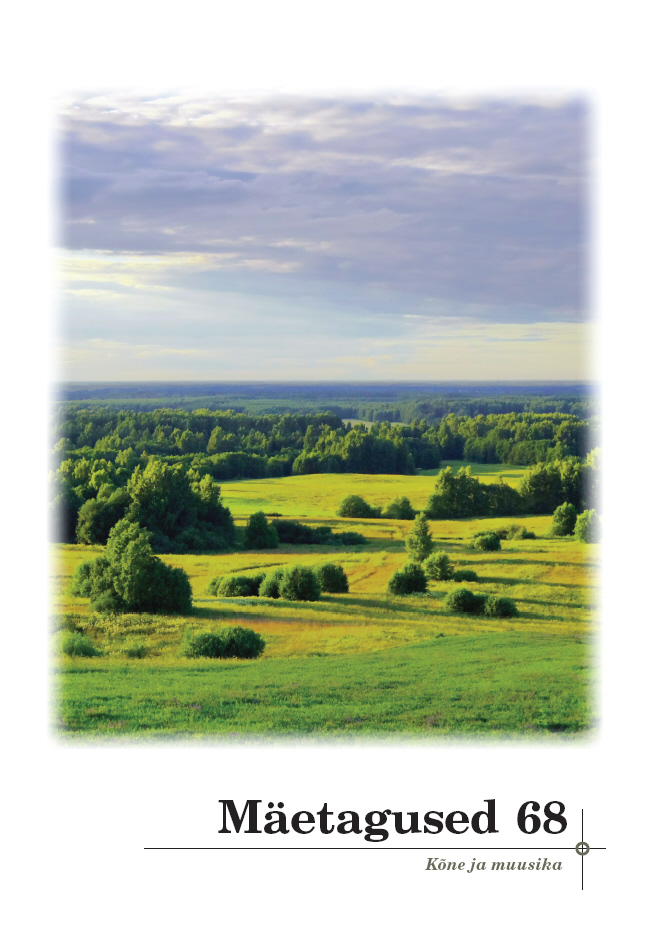Prosoodiast meloodiani – eestikeelse Piibli proosatekstil põhineva ühehäälse a cappella kirikulaulu ehk eesti pühalaulu metodoloogia
From prosody to melody: Methodology of Estonian scripture prose text based monodic a cappella chant or Estonian sacred plainchant
Author(s): Eerik JõksSubject(s): Customs / Folklore, Theoretical Linguistics, Applied Linguistics, Cultural Anthropology / Ethnology, Culture and social structure
Published by: Eesti Kirjandusmuuseum
Keywords: Bible; church music; Gregorian chant; Holy Scriptures; liturgical chant; medieval sacred Latin monody; plainchant; prosody; psalm; vernacular;
Summary/Abstract: The most widespread Estonian Christian chant is Lutheran chorale, which is based on a text of strophic verses, in which all verses can be sung with the same tune. The roots of the written tradition of the Western Christian chant (9th–10th cc.), however, are in the prose text of the Latin Bible. Nowadays a chanted vernacular prose text from the Bible or vernacular plainchant has found its way to the Lutheran repertoire. The article demonstrates how consideration of the parameters of Estonian prosody can contribute to the creation and practice of Estonian plainchant. In other words, the article describes a system of principles following which the stylistically versatile Estonian plainchant is created. The styles of vernacular plainchant are: (1) contemplative, (2) declarative, and (3) free style. The Estonian or vernacular plainchant can be defined either through the categories of linguistics or those of Christian piety. In terms of linguistics, the vernacular plainchant follows the three parameters of prosody: (1) the temporal parameter, (2) the dynamic parameter, and (3) the intonation parameter, while pronouncing the texts of the Holy Scriptures and realising as well as considering these three parameters in shaping the melodic information and bearing it in mind in performance. In terms of Christian piety, the vernacular plainchant is a monodic musical a cappella pronunciation of the unaltered prose texts of the Holy Scriptures, which is based on prayerful concentration and/or sacred conviction, and is trying to follow in every point the authority of the Word of God and consider the prosodic peculiarities of a particular language. The contemplative style is based on “switching off” the personal prosodic intonations of the text. To a certain extent the result resembles a phenomenon that is known in music performance as “recitation”. However, it differs from recitation, because there is no intention of a performer to express him- or herself through music. The result that is similar to recitation happens simply because the performer begins to say the syllables at the same height without any intention to sing. Melodic formulas are then applied to this recitation-like contemplative talking. There are two kinds of melodic formulas in Western plainchant: (1) formulas with accentual cadences, and (2) formulas with cursive cadences. Accentual cadence takes into consideration the prosodic principles of Latin as well as other Indo-European languages in which an accented syllable is usually perceived as the longest syllable of a word. This means that the accented syllables are always marked with dominant notes of a cadence. Cursive cadence, on the other hand, always applies the same amount of syllables in the cadences without any accentual considerations. Estonian prosody differs significantly from Indo-European prosody, as the accented syllable is not always the longest syllable of the word. Therefore, in Estonian formula-based plainchant a cursive principle should be preferred. While the contemplative style stands on “switching off” personal prosodic interpretation, the declarative style attempts to achieve the opposite: personal conviction in pronouncing the text should be enhanced and extracted as a melody. The free style is a further development of the declarative style, in which the composer decorates the melody according to his or her personal creativity and taste. Describing the contemplative, declarative, and free styles of Estonian plainchant showed that we are dealing with a genre of extensive possibilities, which appreciates our mother tongue, recognises the tradition from which our musical culture springs, and gives a dignified position to the core text of the Estonian language and culture – the Bible.
Journal: Mäetagused. Hüperajakiri
- Issue Year: 2017
- Issue No: 68
- Page Range: 53-82
- Page Count: 30
- Language: Estonian

